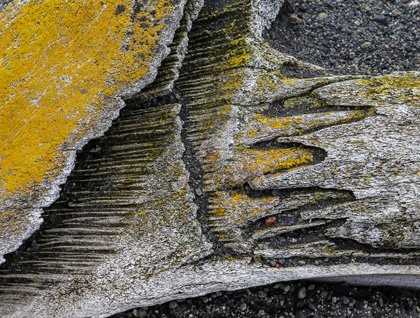Land ahead! After a lot of waves and swell over the infamous Drake Passage, during breakfast we were finally approaching the South Shetland and made our first sight of Antarctica. On the outside of the islands we saw plenty of grounded large icebergs of different shapes and history. From the bridge we sighted swarms of petrels, distant spouts by humpback whales around the ship, and also our first penguins. The islands are covered with snow and ice.
Through the morning we continued to sail into the more protected and pleasant waters, Bransfield Strait, and during the time we did the IATO briefing to prepare us for our upcoming polar adventure, which included a full decontamination of our gear. The latter is important to prevent invading species (seeds) to establish here. We want to maintain Antarctica’s pristine environment.
During lunch we approached Deception Island, our first outing ahead and soon a fleet of inflatable boats, our Zodiacs, were in the water. Without these it would be very hard to go ashore anywhere in this rugged land. Here we also started with a challenge, as Baily Head, on the outside of Deception Island, is known to be a notoriously difficult location to get anyone ashore. An attempt to land the staff ended with five in the water and the landing was of course canceled.
Anchor up and instead we slipped through the narrow passage, Neptune’s Bellow, at this deceptive island, and into the caldera which offers good protection from any swell. This is known as Port Foster, and Captain Henry Foster aboard Chanticleer called here in 1829 as he was sent out by the British Admiralty to make pendulum and magnetic observations. Foster had earlier, in 1823, been with Captains Clavering and Sabine in northeast Greenland to conduct the same observations and the Admiralty gave him the command to go south.
Soon we had the ship in position at Whalers Bay and made our first steps on land in Antarctica. It was a cold wind sweeping through the caldera, a true polar experience, but climbing up to Neptune’s Window kept us warm. Others explored the remains of the only land-based whaling station in Antarctica, operating between 1907 and 1931. Some old buildings are remains from the British Antarctic operation, Operation Tabarine, which was launched in the end of WWII as Argentina was moving into the Peninsula. Britain had already in 1908 claimed this as part of the British Empire, but now new nations also arrived with claims. Before the three major volcanic eruptions, 1967-70, three nations were claiming the Antarctic Peninsula and had stations on Deception Island—Britain, Chile, and still today Argentina. The British and the Chilean stations were totally demolished during these eruptions and never rebuilt, although some of the British houses are still standing but in very poor state. Some of the gear left by the whalers can still be seen: boilers, cisterns, and some water boats. Also some of the graves from the whaling era can still be seen.
We were able to walk as far as to the aircraft hangar, which are remnants of the British activities here in the 1960s. Still, Deception has a long history in Antarctic aviation as it was here that Sir Hubert Wilkins and his chief pilot Eilson took off with single engine Lockheed Vega on November 16, 1928, named San Francisco, and became the first to fly an airplane in Antarctica. The aerial age of Antarctica had begun and the aim was to fly between the Peninsula and the Ross Sea. The operation was sponsored by the famous newspaper publisher William Randolph Hearst, who had his name immortalized after Wilkins named a large piece of land after his sponsor, which later turned out to be an island.
As we tried to land staff ashore at Baily Head our aim was to visit one of the larger chinstrap penguin colonies on the Peninsula. At least those who followed our landing attempt also saw plenty of penguins from the ship. At Whalers Bay more penguins were encountered but ashore, as plenty of gentoo penguins were around. Also some Weddell seals hauled out on the beach. Of course plenty of skuas were at the pool behind the beached floating dock, but which species is maybe hard to tell.
Back on board we soon steamed out of the caldera and our heading was set for Antarctic Strait. Before Captain’s welcome dinner, the Captain introduced some of the officers and crew aboard. It’s been a great start on our polar expedition to Antarctic Peninsula.









